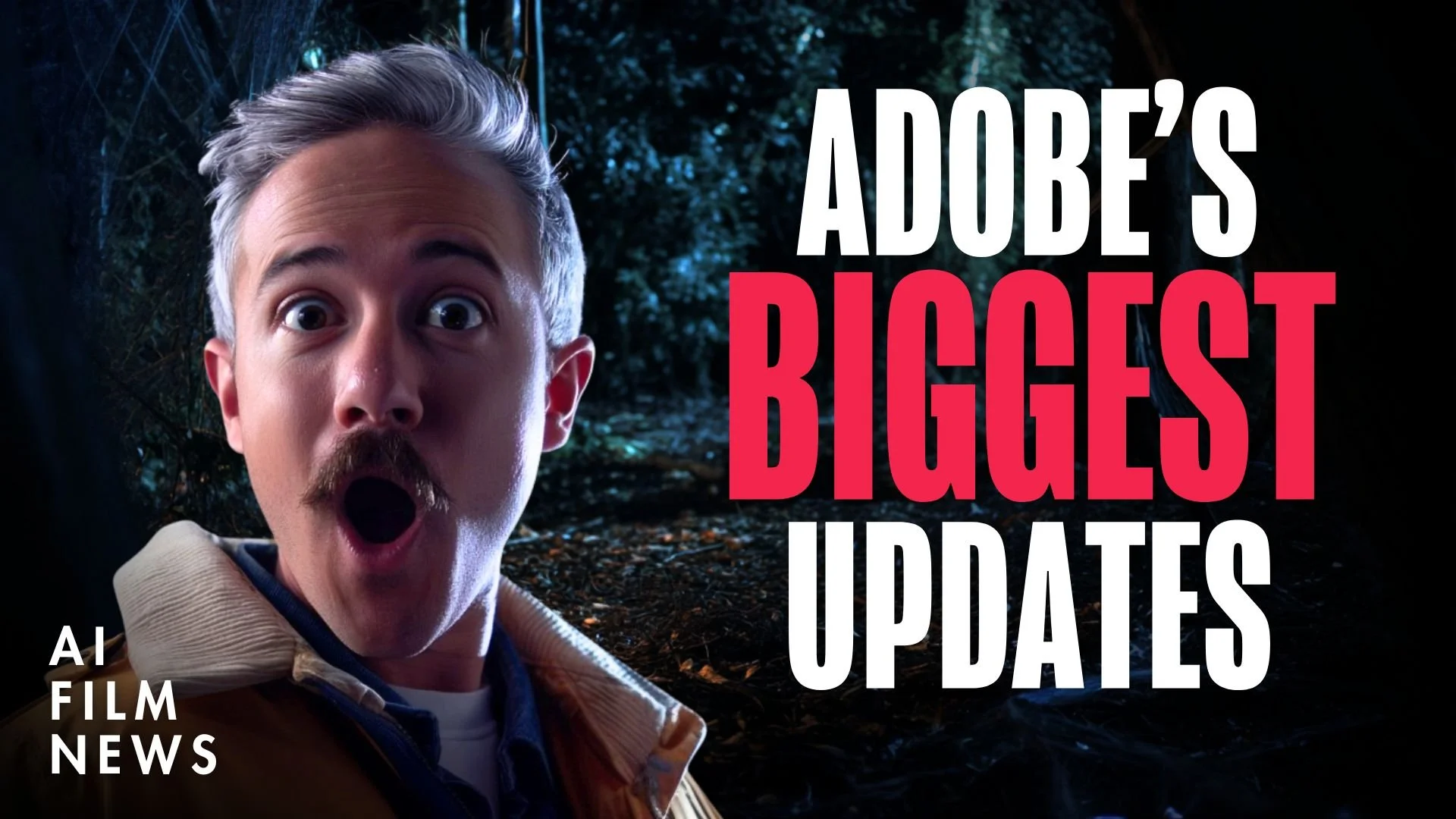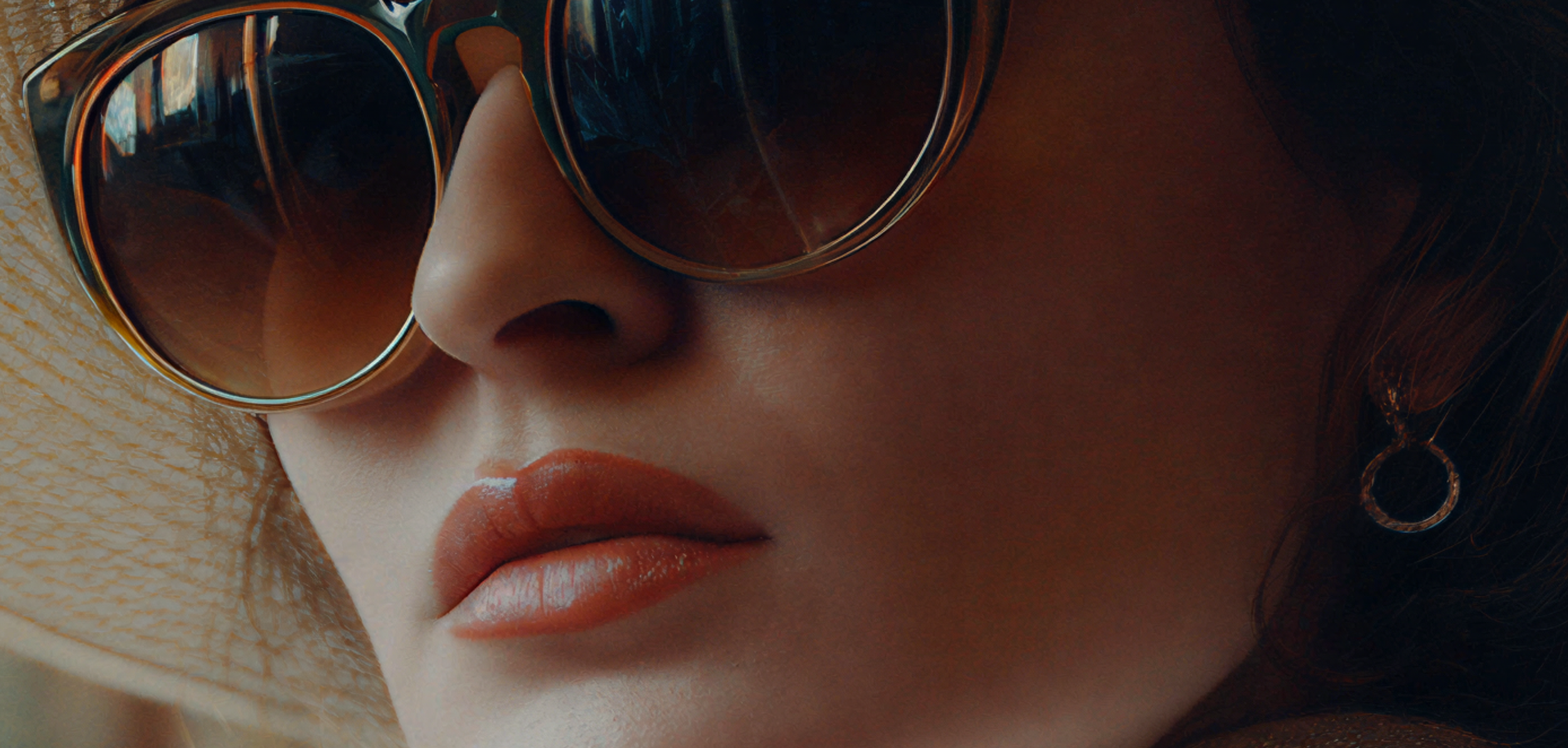Adobe Launched Some Major AI Film Tools | AI Film News
This has been a big week in the world of AI Film News! From Adobe AI updates top Magnific Precision 2, and of course Hailuo Minmax 2.3, there is a lot going on.
This past week in the world of AI Film News, Adobe launched a massive tool update at their annual Adobe Max conference. When you combine those updates with Magnific Precision 2 and Hailuo Minimax 2.3 this makes a massive list of things to talk about.
In the article and video below, we will take a deep dive into the major updates from Adobe as well as look at how they are beginning to leverage their platform as more of a tool aggregator.
We will also compare Hailuo Minimax 2.3 with the Veo 3.1 and Kling 2.5 to see if it holds up against the best of the best.
Check it out!
Adobe Launched Some Major AI Film Tools | Video Breakdown
Below is a tutorial where we dive into some hands on tutorials and look at how these new tools compare to the current best.
Adobe’s Major New AI Film Tools
Below is a breakdown of the latest AI Film tools from Adobe, as well as a couple of other major updates.
1. Adobe Goes All-In on AI
Last year at Adobe Max the Adobe seemed to offer some minimal AI updates to their tools, at least based on what they were highlighting in the main stage.
This year, they went in a completely new direction where it seemed as though nearly all of the updates were AI updates of some sort or fashion. This is obviously a big new direction compared to the previous year’s conference.
2. Firefly Image 5: Improved Quality + Client-Safe Licensing
Adobe introduced Firefly Image 5, a new image model producing higher-resolution, cleaner, and more professional visuals than previous Firefly versions.
Adobe Firefly 5
Midjourney
You can see a comparison to Midjourney above. Midjourney is obviously better. Firefly still has more of the editorials, stock look to it compared to Midjournmey’s more cinematic look. The pro of Firefly is that the tool is completely copyright cleared, making it safe for professional projects.
3. Model Aggregation Inside Adobe Apps
It seems like a lot of tools that used to be obsessed with becoming the best model on the market have ssense given up on that battle and shifted their goals toward becoming the best platform for AI creatives. Adobe made a major statement this year by positioning themselves less as a competitor to the best AI models available, and more as the most desired platform.
Here’s a few of the tools they offer inside of their platform:
Topaz
Luma AI
Pika
Google Veo 3.1
Runway
Moonvalley
OpenAI
Ideogram
Flux
Models like Midjourney, Seadream, and Chinese tools (like Kling or Minimax) are not yet included.
4. Adobe Moodboard
Adobe’s new MoodBoard Maker lets you pull images, references, and AI generations into one visual workspace for planning creative concepts. You can generate new images directly inside the board while using models like Firefly Image 5, and rearrange them however you like to develop tone, style, and shot direction.
This works similarly to some other moodboard style tools you have probably seen, but this is built directly into Adobe’s AI ecosystem, making it easy to move from idea to image to video all in one workflow, and see the full layout and how to shots work together in one place before the edit.
5. AI Auto Masking in Premiere Pro
This update is honestly huge because rottoscoping can often be one of the most taxing tasks on a filmmaker. Even with after efftext AI rotobrugh, it can still be time-consuming.
Having the ability to mask out a subject inside of Premiere is going to help make workflows significantly more efficient.
6. AI-powered Photo Search in Lightroom
This is a small one, but if you have ever tried to find a photo in Lightroom among your hundreds (or thousands) of other shots it can often be difficult. Adobe added an AI-powered search where to can describe the photo you are looking for in order to pull it up.
7. Topaz API is now integrated inside of Adobe workflows
If you have been around Curious Refuge for a long time, you know that Topaz Labs has been one of our favorite tools for upscaling both photos and videos.
Amongst their list of API, Topaz Labs is among those tools now being offered inside of Adobe’s platform. Having the ability to upscale photos or videos insided of Adobe tools is going to be a significant thing for filmmakers using Adobe software.
8. AI Music Generation for Video
Adobe introduced automatic soundtrack creation that matches the duration and tone of your clip.
The quality, honestly, isn’t any better than hand-picking licensed tracks, but it seems like this clearly signals where editing workflows are heading.
10. Project Moonlight
Project Moonlight is Adobe’s new tool that connects to your social media accounts and automatically analyzes your content to recommend what you should post next. It’s designed to help creators and brands grow faster by suggesting relevant formats, styles, and ideas based on performance trends.
This is a great example that it seems like Adobe is not only trying to position themselves as a major player in the AI Film world, but they are trying to really position themselves as significant in multiple workflows for AI creative more generally.
11. Project Graph
This update was incredibly interesting, especially following Runway’s recent announcement of ‘Workflows.’ Project graph seems to be some sort of ComfyUI competitor that Adobe wants to leverage to give filmmakers access to noise-based editing inside of their platform.
12. Foundry & Gen Studio
Adobe is now offering custom model training for major brands, enabling companies to generate consistent brand-style output at scale—from social graphics to full campaigns.
This seems like a big deal for brands wanting to build AI tools more customized to things like their brand voice and guidelines.
14. Adobe’s Interesting Research Findings
Adobe surveyed 16,000 creators and got some super interesting insights.
The first was, 76% of those creator claimed they were using AI to help grow their brands and businesses. The second was, 36% of creators say cost is the biggest barrier. This is understandable.
While Adobe’s aggregation system is powerful, credit costs are high. For example:
Generating one clip using Luma Ray 3 inside Adobe can cost ~$2.50.
A 200-shot short film could exceed $2,000+ in generation costs.
This is currently a major barrier to large-scale filmmaking workflows.
15. Minimax 2.3 vs. Kling vs. Google Veo 3.1
We tested Minimax 2.3 to see what this brand-new model can do. You can see some of our tests below.
Hailuo Minimax 2.3
Kling 2.5 Turbo
While this is a pretty great new model, here’s our findings: Kling tends to produce more realistic lens characteristics, and Google Veo 3.1 still provides the best character performance + lip sync, though capped at 720p output for now.
16. Magnific Precision 2 Named Best Image Upscaler
Magnific launched their brand new Precision upscaler and it has overtaken Crystal as the best in our opinion. We scale in about 200% so you can see the comparison in the finer details below.
Crystal
Midjourney
Gigapixel
Magnific Precision 2
You can swee that Magnific Precision 2' results in the most natural, film-like high-resolution upscaling, especially for skin & fine texture work.
17. AI Films of the Week
The latest highlight reel features films created by Promise Studio for Adobe Max, including:
AI Hybrid Film My Friend Zef byDave Clark
AI Film Kyra by Meta Puppet
AI 2D Animation film Nagori by Guilherme
Get AI News Sent Straight to You
We cover the latest AI Film News every single week. Our desire is to help eliminate the confusion for you when you are trying to learn the latest AI tools or figurre out which new AI model is the best.
Fill out the form on this page, and we will add you to the list to receive AI news sent to your inbox every single week, just once a week.
Along with that, you will get access to a free AI Film course. Check it out and we hope you enjoy!







